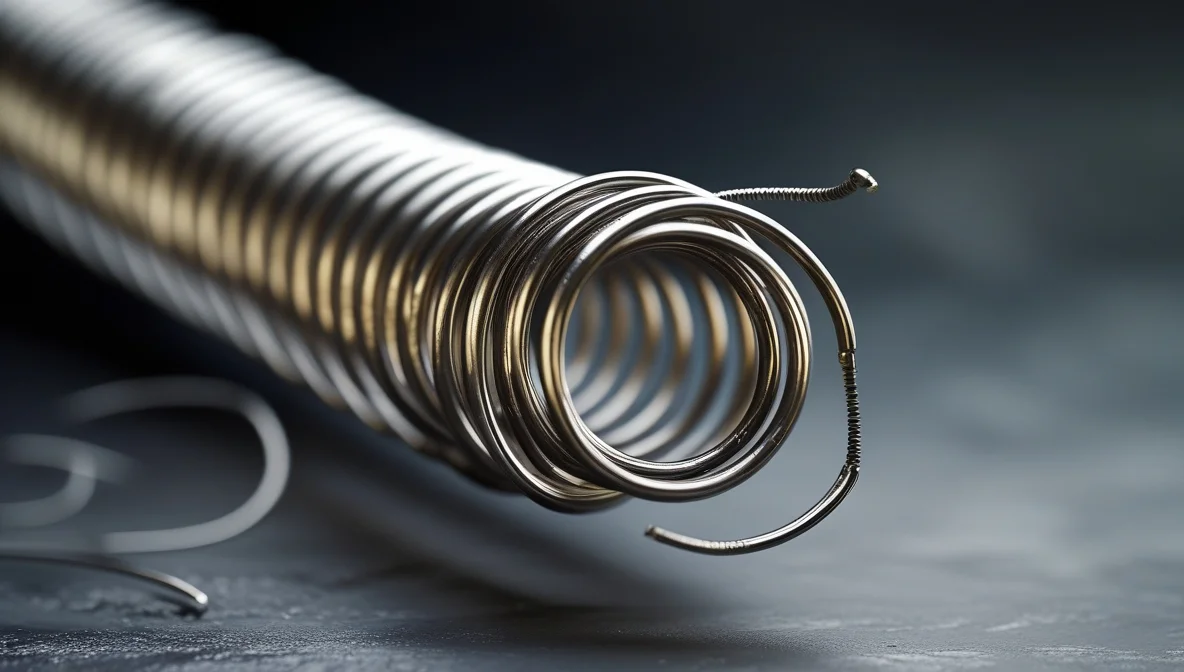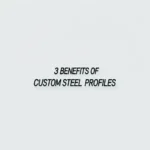Whether music wire spring is “better” than a stainless steel spring depends entirely on the application’s specific requirements. They offer different advantages and disadvantages.


Music Wire (High Carbon Steel – ASTM A228):
- Pros: Very high tensile strength, excellent fatigue life, high elastic limit, relatively low cost, readily available. Often the strongest choice for a given wire diameter among common materials.
- Cons: Poor corrosion resistance (rusts easily), limited performance at elevated temperatures (typically below 250°F / 121°C), magnetic. Requires protective coating (e.g., zinc plating, oil) in most environments.
Stainless Steel Spring Wire (e.g., AISI 302, 304, 316, 17-7PH):
- Pros: Excellent corrosion resistance (main advantage), suitable for food grade, medical, and outdoor applications, better performance at higher or lower temperatures compared to music wire (depending on the grade), non-magnetic or weakly magnetic (austenitic grades like 304, 316).
- Cons: Generally lower tensile strength and fatigue life compared to music wire of the same size (except for high-strength grades like 17-7PH), higher cost, potentially lower elastic modulus (meaning slightly less stiffness for the same geometry).
Direct Comparison:
| Feature | Music Wire | Stainless Steel (e.g., 302/304) | Stainless Steel (e.g., 17-7PH) |
|---|---|---|---|
| Tensile Strength | Very High | Good | Very High |
| Fatigue Life | Excellent | Good | Very Good |
| Corrosion Resistance | Poor | Excellent | Good |
| Temperature Range | Limited | Good (Moderate High/Low) | Excellent (Higher Temp) |
| Cost | Low | Moderate | High |
| Magnetism | Magnetic | Non-Magnetic (when annealed) | Magnetic (after hardening) |
Conclusion:
- Choose Music Wire if maximum strength, fatigue life, and low cost are the priorities, and corrosion is not a concern or can be managed with coatings.
- Choose Stainless Steel (like 302/304/316) if corrosion resistance, non-magnetic properties (for austenitic grades), or operation in specific environments (food, medical) are essential, and slightly lower strength is acceptable.
- Choose High-Strength Stainless Steel (like 17-7PH) if you need a combination of high strength (approaching music wire) and good corrosion resistance, especially at elevated temperatures, and the higher cost is justifiable.
Neither is universally “better”; they serve different purposes effectively.
Is music wire spring better than stainless steel spring? — This article provides a practical buyer‑focused overview with specifications, selection tips, and on‑site considerations. Explore related topics: blog.
Key Specifications and Standards
- Standards: ASTM / EN / JIS (e.g., ASTM A240/A36, EN 10088/10025, JIS G4304/G3131).
- Surface options: 2B, BA, No.4, HL, mirror; galvanized (electro / hot‑dip).
- Processing: hot‑rolled, cold‑rolled, annealed & pickled, welded or seamless.
- Typical services: slitting, shearing, cut‑to‑length, drilling, beveling, deburring.
- Documentation: MTC, CO, packing list with net/gross weight and heat numbers.
Typical Applications
Construction, machinery, automotive, energy, enclosures and fencing, food equipment (for stainless), and general fabrication. Match grade and finish to corrosion, strength, and appearance requirements.
Selection Guide
- Use certified material with Mill Test Certificate (MTC).
- Confirm standards (ASTM/EN/JIS) and tolerances per drawing.
- Match surface finish to application (2B/BA/No.4/galvanized).
- Specify dimensions and acceptable deviation upfront.
- Plan packaging and corrosion protection for transit.
Processing, Packaging and Logistics
We adopt edge protection, waterproof wrapping, rust‑inhibiting paper, fumigated pallets, and strapping suitable for sea freight. Loading photos and weight lists are provided for each shipment.
FAQs
Q: What lead time can I expect?
A: Typically 7–15 days ex‑works for standard sizes; custom processing may extend the schedule.
Q: Can you provide cut‑to‑size service?
A: Yes. We slit, shear, cut, drill, bevel and deburr to drawing to reduce waste and speed installation.
Q: How do you ensure quality?
A: Incoming inspection, process control, and final inspection with traceable heat numbers; third‑party inspection is available.
Q: Do you support small trial orders?
A: We support pilot quantities with consolidated shipping to control cost.
All values are typical and for guidance only; confirm with the datasheet and purchase order before production.
Related products: view details.
Related products: view details.





